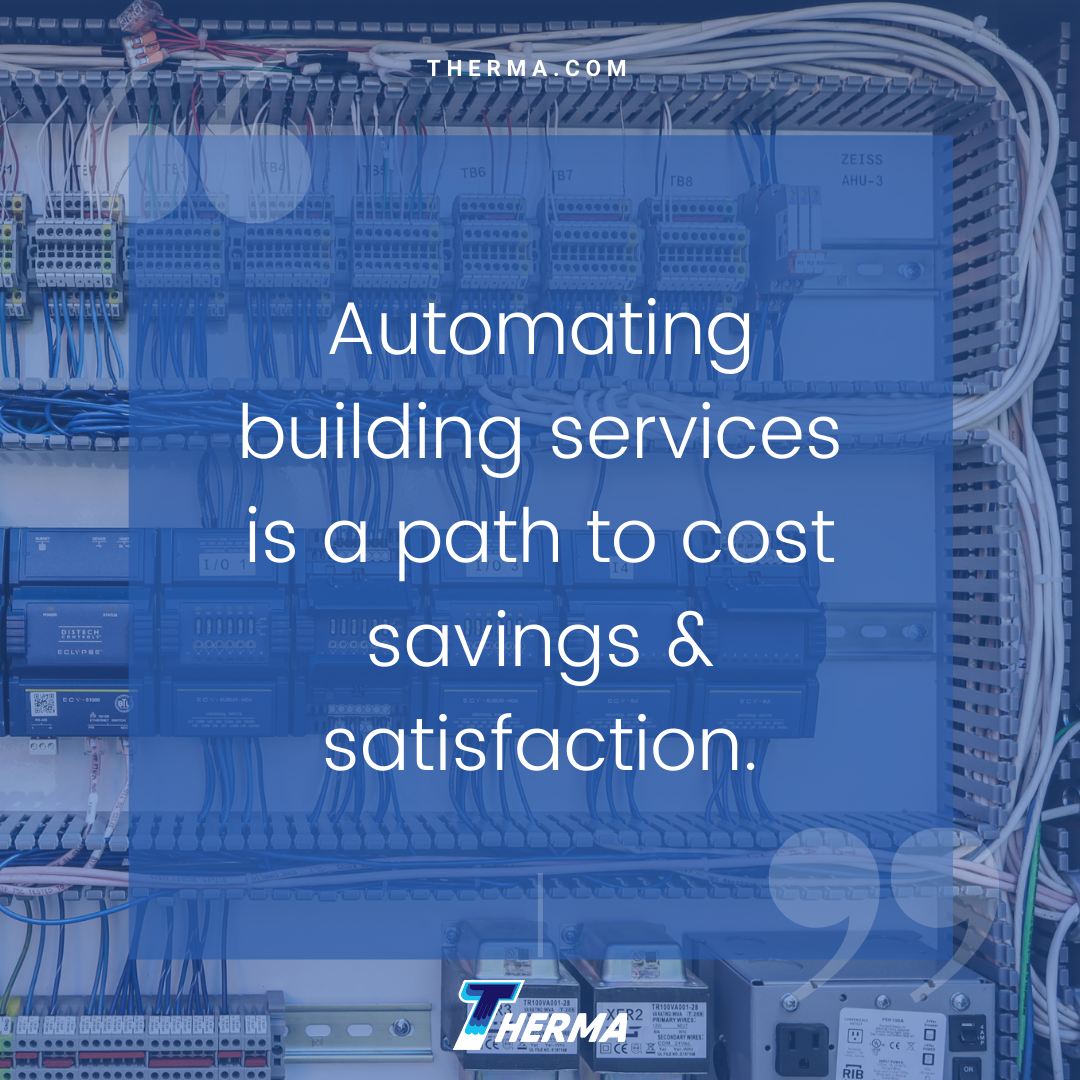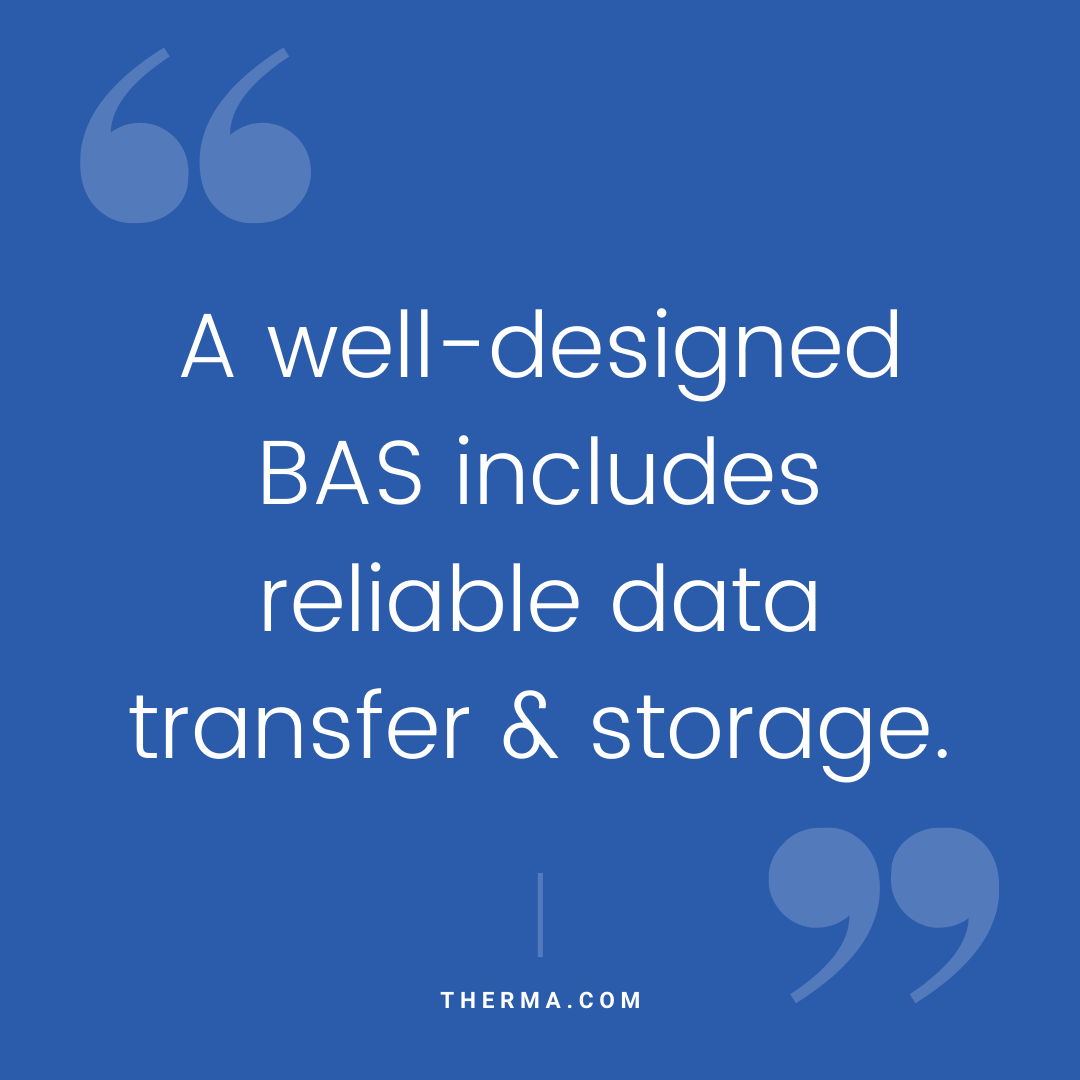A building automation system (BAS) networks equipment sensors and controls to create a centralized point for managing one or more building subsystems. The software provides a user interface for monitoring and communication. BAS can be pre-programmed or customized, but the focus of either type is on conserving resources, reducing costs, and optimizing equipment.
What Makes a Building Automation System (BAS)
Automation requires data and the means to communicate that data. Starting with the data and building up, the general process flows as such:
- Controllers acquire data from sensors, or inputs, in the field.
- The controller processes the information and signals an output, such as an actuator.
- Field buses are a step above controllers. They collect data from the field and relay it to a supervisory device or software on the server.
- The server stores the data.
- The different layers work together to control select building functions.
Actions are based on programmed algorithms to meet the desired goals. For automation algorithms to function, data must flow on-demand with little to no interruptions. A well-designed BAS includes reliable data transfer and storage.
All BAS include infrastructure for communicating data between the equipment and the networking hub. Communication may be over ethernet, LAN, or wireless. Standardized communication protocols such as BACnet, Modbus, or LonMark improve the BAS’s capacity to manage different subsystems or nodes.
While BAS, at its most basic focus on automation, many systems are also designed for failure detection and prevention. Alarms can signal maintenance staff when critical equipment is about to fail. Managers can identify potential issues using trends and reports from the data collected by the BAS. Automation systems offer many ways to benefit facility managers and building owners.
Best Practices
Installing a new system or updating an old BAS is not as simple as grabbing something off a shelf and plugging it in. “Preparation and planning” is the mantra for all significant projects.
Know your goals
- Include all stakeholders – this includes IT and staff who work with building operations reports. Data can be used in different ways, not just for automation. Identifying how others use or want to use the data can help fine-tune goals and physical specifications.
- Know what you want to achieve and prioritize items. This is especially true for identifying locations of sensors or alarm capabilities. Information overload cripples staff’s ability to respond to alarms effectively.
Establish metrics
- With prioritized goals set, consider how to measure success using discrete metrics. Spell them out. Link them to data from physical sensors so that the BAS design includes concrete data collection that provides information for managers and owners to act.
Specify limiting factors
- Integrating multiple subsystems, for instance, HVAC and lighting improve overall building efficiency and can increase savings. However, that savings requires an upfront investment. If funding is unavailable, but additional integration is a future goal, open protocols and scalability are important.
- Sizing and positioning of hardware for established buildings can be tricky. Identify areas that may need creative solutions.
- Make note of contracts or policies that require using specific vendors, manufacturers, or proprietary protocols that impact BAS options.
Define lifecycle and future outlook
- Forward-focused tasks such as establishing standards and procedures help with planning in the early stages of upgrading or installing a BAS. These tasks also keep future staff actions aligned with the goals driving this investment.
- Training for personnel includes the initial efforts to get the system up and running, but also helps to identify “growing pains” as the system is used and changes.
- As a networking system, a building’s IT team should include protecting BAS data as part of their cybersecurity measures.
Automating building services is a path to cost savings and satisfaction. Conserving resources and improving equipment efficiency produces a more smoothly running building. A BAS can help managers and owners meet operation goals while creating a positive occupant experience and increasing productivity.









